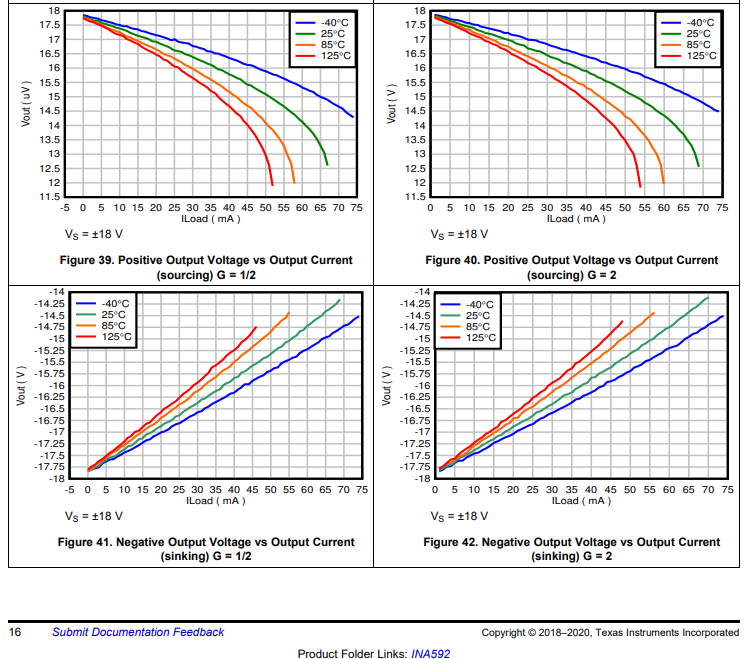Hi Team,
Our customer would like to confirm if is it ok to use such a low-valued load to INA592?
He would like to confirm if it is better than AD8276 (please see figure 20 and fig. 21) where they show the max. output voltage as a function of the output load. From this figure it is clear that for a low-valued output load, the voltage drop is actually pretty bad.
The customer cannot find a similar plot in the INA592. He would like to know the maximum output voltage of the INA592 with respect to both the current and the load connected to the output.
Please let me know if you have any questions to answer this confirmation of the customer of INA592.
Thanks,
Jonathan



